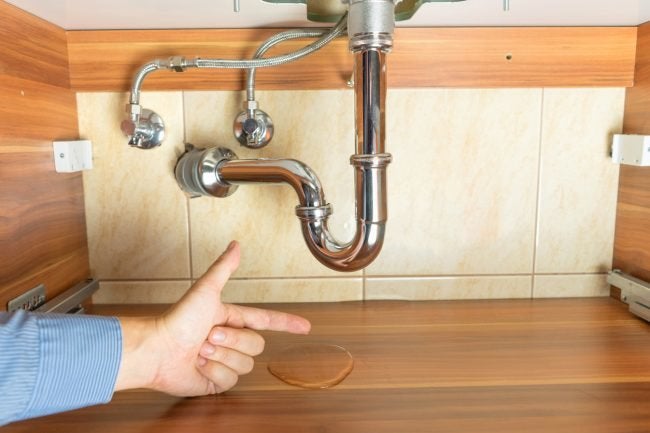
Water leaks are among the most devastating problems you can face as a homeowner. It increases your water bills and could damage your house flooring, walls, and foundation. It is also a health risk because it encourages mold and mildew growth.
Sometimes, it’s hard to identify a leak, especially small or underground. Some helpful tips include:
Monitor your water meter
First, turn off all the water outlets in your home, and ensure the dishwasher and washing machine are off. Next, read the meter, note down the readings, wait for an hour or two, and reread it. If the numbers have changed, you leak.
Turn off the shut-off valve to your house’s primary water supply pipe to know if the leak is inside or outside the house. This is usually in a utility room where the main water pipe gets into your home or basement.
Recheck your meter, note down the readings, and return after two hours. If the numbers have changed, the leak is outside the house, but it is inside if they have not.
Monitor your water bills
You can easily predict your monthly water bills using the same appliances. However, if you notice a spike in the bills and have not added any appliance or water usage around the home, it indicates a water leak.
Dye test your toilet
Your toilet is one of the most common places for a water leak. If signs show there is a water leak, but you can’t locate it, your toilet’s flapper could have become loose and might be allowing water to trickle into the bowl without flushing.
To test this, add dye or food color into the toilet tank, then monitor it. If the color transfers into the bowl, you need to replace the flapper to stop the leak. You can call a plumber Elk Grove CA, or replace the flapper yourself.
Look out for greener patches
We all love green and lush grass in the garden. However, if you notice spots where the grass grows greener, taller, and faster than other spots without an obvious explanation, there could be an underground water leak.
You need to call the professionals who will use professional leak detection techniques to determine if there is a leak and how to fix it.
Monitor the water pressure
Water pressure around the home could reduce if you use several appliances or faucets at once. However, if you notice a drop in the water pressure when only using one device or tap, it is a sign of a leak.
If you notice the low water pressure in the shower, first look at the showerhead. Sometimes there could be limescale buildup that could reduce the pressure. If the showerhead is clean, you can be sure it is a leak.
Look for water paddles
If you suspect a leak but can’t locate it, look around your house for wet spots or water puddles. You will find these mainly in the basement, near your house foundation, or at the base of your toilet, tubs, water heater, showers, washing machine, and dishwasher.
If you don’t find wet spots, look for mold growth. Mold thrives where there is excess moisture, which indicates a leak. It would help if you also looked out for yellowish or brownish water stains on your walls and ceilings, budging wallpaper, bubbling paint, or a musty smell.
Listen for trickling sounds
If you inspect your home but cannot locate the leak, it is probably under it. Turn off all your fixtures and appliances, then listen for a trickling sound. If you hear it, the leak is in the pipes under your house, and you need to call professionals immediately.
Have a leak detector
If you have places around your home that are prone to leaks, like an old water heater or old pipes, you can install a leak detector in those spots. The appliance will emit an alarm when it senses any water, no matter how small.
If you live in an old home, mostly above 25 years, you should inspect your pipes and faucets more often because they are more likely to experience leaks. Once you detect a leak, no matter how small, call the professional immediately because if you leave it unattended, it could lead to more extensive and more expensive issues.
About The Author: Paul Sebastian
